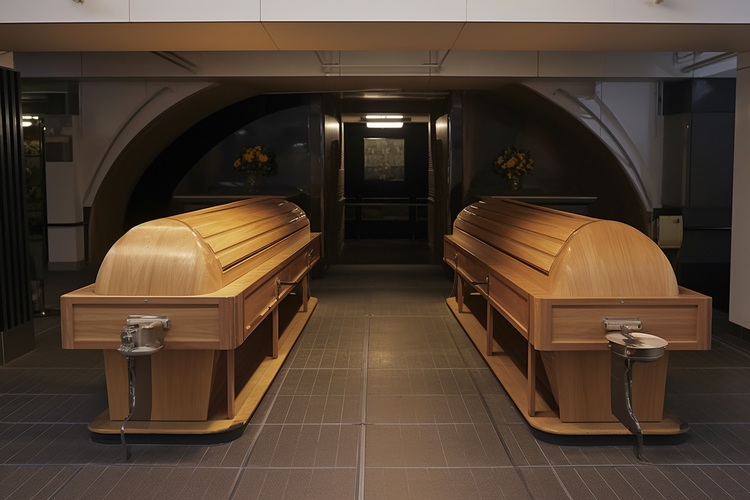Cremation Cost Australia 2025 Prices and Cremation Process Explained
Cremation expenses in Australia vary significantly, ranging from under $3,800 for direct cremation services to over $8,000 for full ceremonial options. Understanding the pricing structures and the detailed cremation procedure can assist you in making informed, budget-conscious choices for yourself or your loved ones.

Overview of Cremation Costs in Australia in 2025
Cremation costs across Australia depend on the service type, location, and additional options chosen by families. As of 2025, typical price ranges include:
- Direct or Basic Cremation:This option involves cremating the body without a formal funeral or viewing. Prices generally range from $2,850 to $3,800. This usually includes the cremation itself and required administrative services, but not memorial ceremonies or urns.
- Comprehensive Cremation Services:A traditional cremation service may feature viewings, memorial services, transportation, custom coffins or containers, and other memorial items. These services can exceed $8,000 in total cost.
Factors Affecting Cremation Costs
Several factors can influence the overall expense:
- Type of Cremation Service:Direct cremation is usually more affordable as it omits ceremonial elements, while traditional cremation with full funeral services increases costs.
- Cremation Container Selection:Basic combustible containers such as cardboard or simple wooden boxes are less expensive; ornate or custom coffins add to the cost.
- Additional Services:Transportation, viewings, ceremonies, floral tributes, and catering may all increase the total cost.
- Urns or Keepsake Containers:Prices vary depending on the materials and designs chosen for storing the ashes.
Consumer Protections and Price Transparency
In Western Australia and other states, consumer protection regulations (e.g., the Fair Trading (Funeral Pricing Code of Practice) Regulations 2022) require funeral providers to present clear, detailed pricing upfront. This ensures transparency and allows families to compare different providers and options.
Pre-Planning as a Cost Management Strategy
Arranging cremation services ahead of time and paying in advance can help secure current prices and reduce the financial burden on families during difficult periods. Some providers offer unique memorialization options such as Living Legacy Tree memorials, which combine remembrance with environmental benefits.
Explanation of the Cremation Process
Cremation in Australia is a regulated and respectful process, performed at a licensed crematorium to ensure dignity and care. The typical steps include:
- Confirming Identity:The deceased’s identity is verified, usually by a family member or authorized person. A metal identification tag is attached to avoid mix-ups.
- Authorization and Documentation:The family completes paperwork authorizing the cremation, indicating preferences such as the type of container and who will receive the ashes.
- Body Preparation:Staff clean and prepare the body, remove hazardous medical devices (such as pacemakers), and retrieve valuables or personal items for safekeeping.
- Placement in Combustible Container:The body is placed in a combustible coffin or container, typically wooden or cardboard.
- Cremation in Furnace:The cremation chamber applies intense heat (generally 760°C–980°C or 1400°F–1800°F) for 1.5 to 3 hours, reducing the body to bone fragments.
- Cooling and Metal Removal:After cremation, the chamber cools and metal fragments from implants or tags are removed, often with magnets.
- Processing of Remains into Ashes:Bone fragments are mechanically processed into fine, sand-like ashes by a cremulator.
- Collection and Return of Ashes:Ashes are placed into an urn or container selected by the family. Temporary containers are provided if a permanent urn hasn’t been chosen.
Options for Handling Cremated Ashes
After cremation, families may choose from several options:
- Keeping ashes at home in urns or decorative containers.
- Scattering ashes in meaningful locations (gardens, parks, at sea), in accordance with local regulations.
- Burying ashes in cemetery plots or memorial gardens.
- Using keepsake options, such as memorial jewelry or small urns.
- Participating in ceremonial or environmental memorials, like planting memorial trees.
Factors Contributing to the Growing Preference for Cremation in Australia
Cremation is chosen by an increasing number of Australian families for several reasons:
- Cost Considerations: Cremation is generally less expensive than traditional burial.
- Flexibility: Families can arrange memorial services at their preferred times and locations, and have various options for managing ashes.
- Simplicity: Direct cremation is straightforward and does not require cemetery plots or large ceremonies.
- Environmental Factors: Cremation avoids land use for burial plots, and eco-friendly urns or memorial trees are increasingly popular.
Summary of Cremation Costs and Process in Australia 2025
- Cost Estimates:Basic direct cremation usually costs between $2,850 and $3,800, while full-service cremations may exceed $8,000.
- Cost Influences:Selected services, container type, memorial preferences, and extras all affect total cost.
- Regulatory Protections:Funeral providers are required to give transparent, itemized pricing.
- Process Overview:Steps include identification, authorization, preparation, cremation, ash processing, and return of ashes.
- Ash Disposition Options:Families can keep, scatter, bury, or memorialize ashes in a variety of ways.
- Popularity Factors:Cremation’s growing popularity is due to affordability, flexibility, simplicity, and environmental benefits.
Understanding these factors can help individuals and families make informed, respectful decisions about cremation in 2025.
Sources
- Funeral Cost in Perth Australia 2025: A Comprehensive Guide
- Dwyer Family Funerals - Cremation Services
- Greenfields Funerals - Cremation Services in Perth: Dignified Choices & Pricing Explained
Disclaimer: All content, including text, graphics, images, and information contained on or available through this website is for general information purposes only. The information and materials, as well as terms and descriptions, are subject to change without notice.




